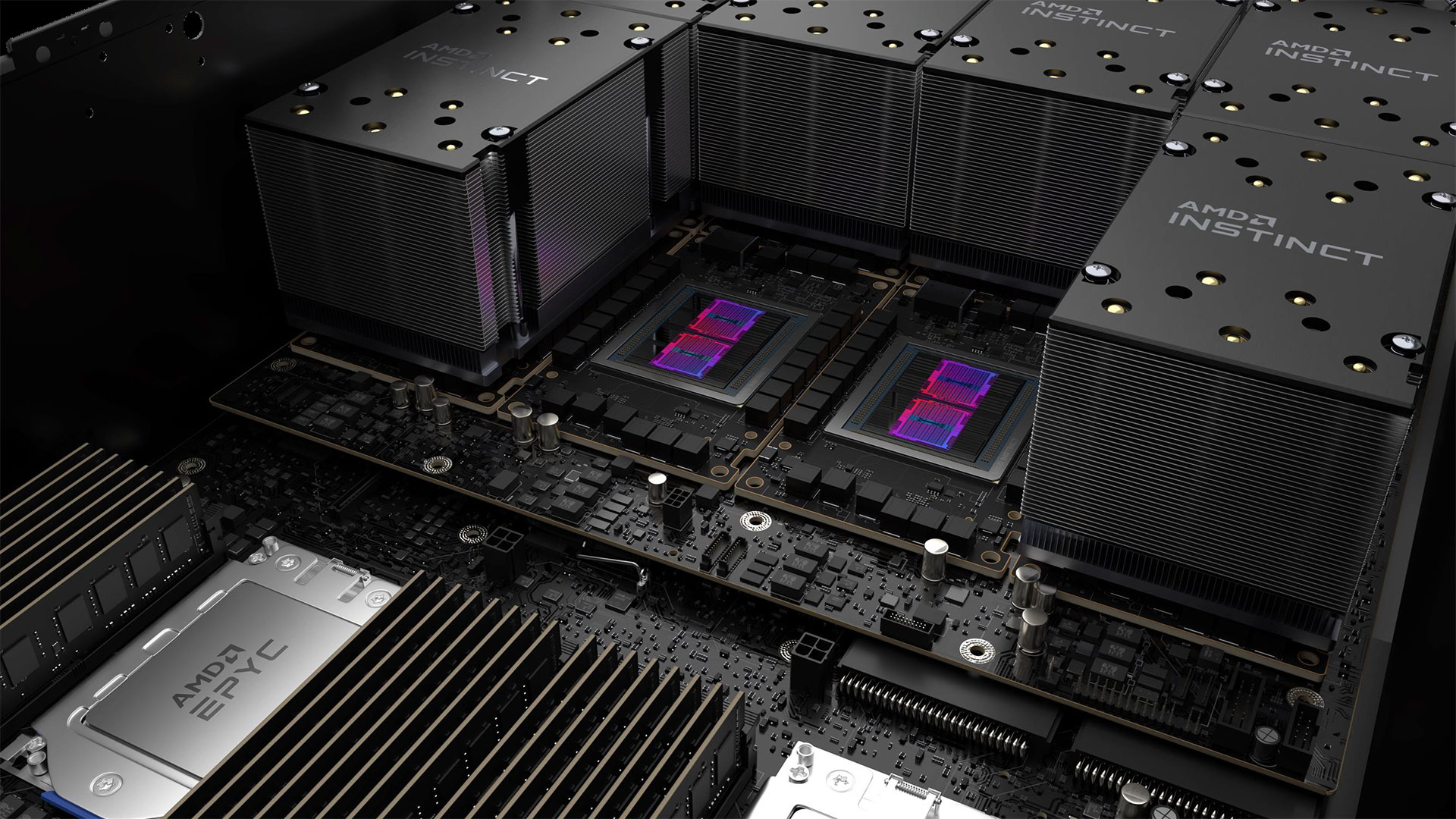AMD sets new supercomputer record, runs CFD simulation over 25x faster on Instinct MI250X GPUs
CFD simulation is cut down from almost 40 hours to less than two using 1,024 Instinct MI250X accelerators paired with Epyc CPUs.

AMD processors were instrumental in achieving a new world record during a recent Ansys Fluent computational fluid dynamics (CFD) simulation run on the Frontier supercomputer at the Oak Ridge National Laboratory (ORNL). According to a press release by Ansys, it ran a 2.2-billion-cell axial turbine simulation for Baker Hughes, an energy technology company, testing its next-generation gas turbines aimed at increasing efficiency. The simulation previously took 38.5 hours to complete on 3,700 CPU cores. By using 1,024 AMD Instinct MI250X accelerators paired with AMD EPYC CPUs in Frontier, the simulation time was slashed to 1.5 hours. This is more than 25 times faster, allowing the company to see the impact of the changes it makes on designs much more quickly.
A new supercomputing record has been set!Ansys, @bakerhughesco, and @ORNL have run the largest-ever commercial #CFD simulation using 2.2 billion cells and 1,024 @AMD Instinct GPUs on the world’s first exascale supercomputer. The result? A 96% reduction in simulation run…April 4, 2025
Frontier was once the fastest supercomputer in the world, and it was also the first one to break into exascale performance. It replaced the Summit supercomputer, which was decommissioned in November 2024. However, the El Capitan supercomputer, located at the Lawrence Livermore National Laboratory, broke Frontier’s record at around the same time. Both Frontier and El Capitan are powered by AMD GPUs, with the former boasting 9,408 AMD EPYC processors and 37,632 AMD Instinct MI250X accelerators. On the other hand, the latter uses 44,544 AMD Instinct MI300A accelerators.
Given those numbers, the Ansys Fluent CFD simulator apparently only used a fraction of the power available on Frontier. That means it has the potential to run even faster if it can utilize all the available accelerators on the supercomputer. It also shows that, despite Nvidia’s market dominance in AI GPUs, AMD remains a formidable competitor, with its CPUs and GPUs serving as the brains of some of the fastest supercomputers on Earth.
“By scaling high-fidelity CFD simulation software to unprecedented levels with the power of AMD Instinct GPUs, this collaboration demonstrates how cutting-edge supercomputing can solve some of the toughest engineering challenges, enabling breakthroughs in efficiency, sustainability, and innovation,” said Brad McCredie, AMD Senior Vice President for Data Center Engineering.
Even though AMD can deliver top-tier performance at a much cheaper price than Nvidia, many AI data centers prefer Team Green because of software issues with AMD’s hardware.
One high-profile example was Tiny Corp’s TinyBox system, which had problems with instability with its AMD Radeon RX 7900 XTX graphics cards. The problem was so bad that Dr. Lisa Su had to step in to fix the issues. And even though it was purportedly fixed, the company still released two versions of the TinyBox AI accelerator — one powered by AMD and the other by Nvidia. Tiny Corp also recommended the more expensive Team Green version, with its six RTX 4090 GPUs, because of its driver quality.
If Team Red can fix the software support on its great hardware, then it could likely get more customers for its chips and get a more even footing with Nvidia in the AI GPU market.
Get Tom's Hardware's best news and in-depth reviews, straight to your inbox.

Jowi Morales is a tech enthusiast with years of experience working in the industry. He’s been writing with several tech publications since 2021, where he’s been interested in tech hardware and consumer electronics.
-
Pierce2623 Reply
CFD has been on GPU for years now.usertests said:I guess the story here is "software that used to run on CPUs ported to GPUs". -
Samlebon2306 The article jumps from supercomputers to gaming GPUs. All this to tell us that AMD's drivers are SOOOOO BAAAAAD.Reply
I am struggling to make a whole with the two disparate stories. -
DS426 Reply
And using an edge case as an example as 1) Tiny's CEO is rather eccentric and loud as amplified by the tech media and 2) AI workloads on AMD non-pro GPUs almost surely meant some software assurances would be sacrificed in favor of the lower GPU costs; the drivers are different. That's why AMD didn't originally officially support that scenario, but Dr. Su later came around to working with Tiny on the driver issues.Samlebon2306 said:The article jumps from supercomputers to gaming GPUs. All this to tell us that AMD's drivers are SOOOOO BAAAAAD.
I am struggling to make a whole with the two disparate stories.
People tend to repeat what they heard, so an issue once can become an issue for a long time -- even after it's not actually an issue anymore.